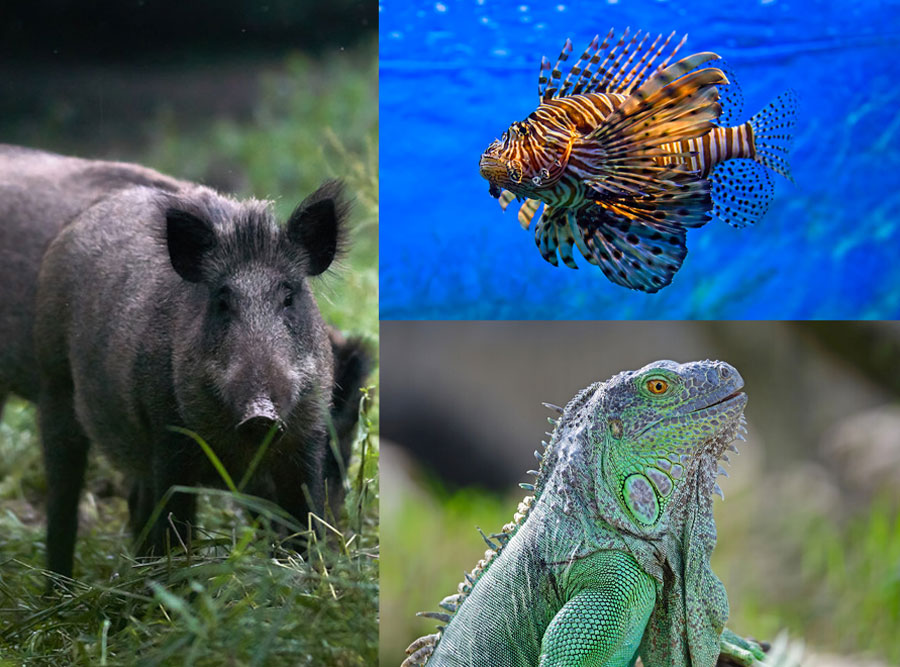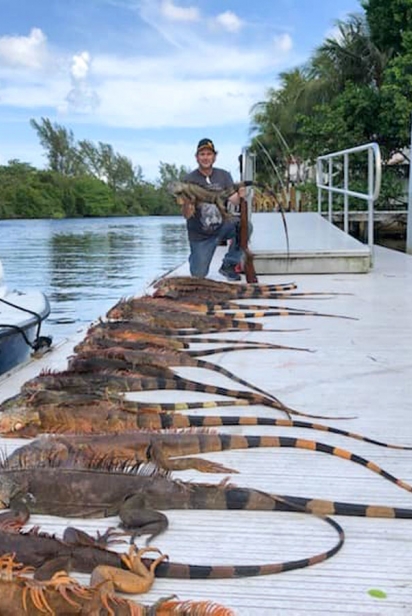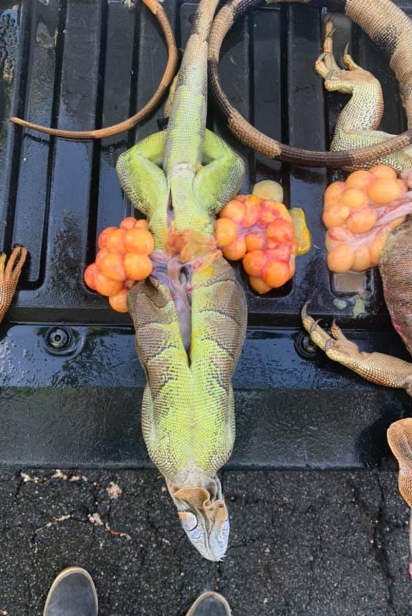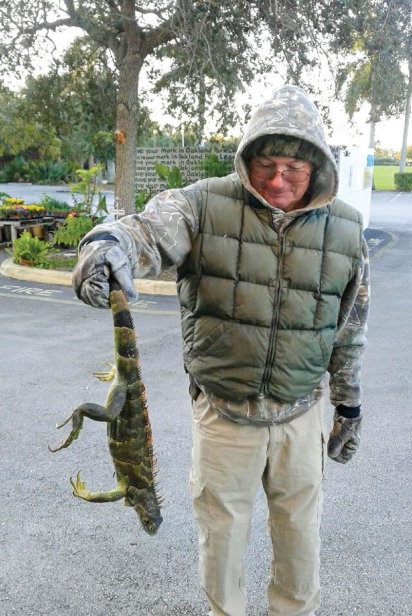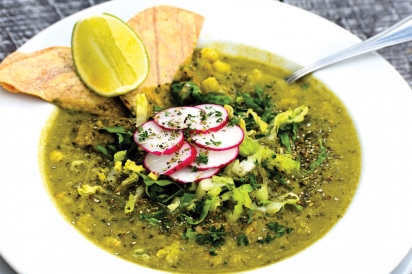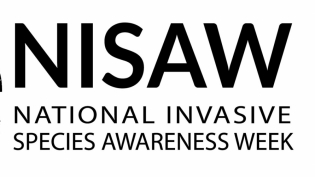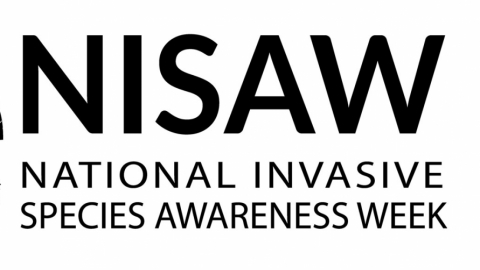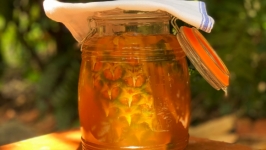Tasty Invasives: Can We Eat Our Way Out of This Mess?
Day of the Iguanas
It makes national news when it’s cold enough in South Florida for iguanas to fall out of trees. But they’ve been around here for the last 60 years, expanding gradually northward. First reported in the 1960s in Hialeah, Coral Gables and Key Biscayne, green iguanas easily colonized because of South Florida’s man-made canals. Native to Central America to tropical South America and some eastern Caribbean islands, green iguanas (Iguana iguana) are excellent swimmers and feed on ornamental plants and vegetables, including orchids, firebush, jasmine, Washington fan palms, hibiscus, squashes, greens and melons. In Bahia Honda State Park in the lower Keys, green iguanas consume nickerbean, a host plant of the endangered Miami Blue butterfly. They dig burrows that damage infrastructure, including seawalls, porches, canal banks and even landfills.
“The iguana population is exploding in South Florida,” says Brian Wood of Iguana Catchers and All American Gator in Dania Beach. About 12 years ago, someone called him to get rid of iguanas that were digging up the seawall. Soon he was getting calls from residents in upscale communities like Harbor Beach in Fort Lauderdale, Golden Beach and Fisher Island, many with seawalls where iguanas had easy access. “The iguanas were taking over, pooping all around the pool, eating up the foliage,” he says. He started Iguana Catchers and soon was rounding up iguanas for Sean “Diddy” Combs on Star Island and Jungle Island. He was called to remove iguanas at the landfill on Stock Island near Key West, where he found 70 nests in the tunnels they had dug. During a sharp cold snap, iguanas are known to fall out of trees, immobilized by the cold, although they’re not necessarily dead, just stunned – they may revive as it warms up. But a prolonged cold snap takes its toll. “In 2010, there was a two-week freeze that killed 60-70% of the iguanas,” he says. “Ten years later, I’ve never seen so many. They’re moving north to West Palm Beach and learning to adapt to the cold by going underground. And with global warming, we’re not gonna have a two-week freeze.”
At the Urban Farming Institute in Oakland Park, they’re seeing lots of iguanas in their community gardens. “Every time local arborists dump mulch for the gardens, they find iguana eggs in it,” says Stacy Brown, who heads up operations and development for the UFI.
Bird netting keeps critters out of the raised-bed gardens, but not off the tender seedlings. “We put in a fruit forest of 45-50 seedlings, and the iguanas were eating all of them. We tried trapping, but it didn’t work.” What did work, she says, was a solution provided by nature. “There are a pair of hawks at UFI that I have seen catching and eating iguana,” she says.
Killing iguanas is legal – even encouraged – as long as you obey animal cruelty laws. Wildlife trappers use traps and fishing pole nooses and other techniques to take them out.
UFI is planning an event for later this year with Invasive Species Brewery to bring awareness to dealing with nonnative species, including ways to remove them and deal with the dead animals. One of those solutions is creating a demand for iguana as a food. Green iguana is considered a delicacy in Mexico and Central America, where it’s served in stews, as tacos and grilled.
At Talavera, a Mexican restaurant in Coral Gables, iguana is on the menu in the form of iguana pozole. “We serve pozole every Thursday,” says Lalo Durazo, a partner in Jaguar Hospitality Group. Their version of traditional stew uses iguana seasoned with poblano peppers, jalapeños and tomatillo. “The taste is delicate, not strong. The meat is firm but not tough,” he says. “We cook it and mince it.”
Brian Wood, who uses the skins from iguanas to make leather goods, would like to see iguana meat and eggs sold commercially in Florida. “The eggs are a delicacy. They’re rich in protein. The meat is very lean and tasty, and there’s a sweetness because of its herbivore diet,” he says. They’re simple to prepare: “Just gut ’em, boil ’em four minutes, the skin peels right off.”
Online, you can buy iguana sausage, boneless iguana meat, and even a jumbo iguana ($10 lbs., $179.99 at Exotic Meat Market). But Wood, who’s equipped to process alligator meat, just wants to be able to commercially sell processed iguana meat in South Florida. He’s been trying to get the FDA to allow its sale here, but red tape has been getting in the way.
Maybe increased demand for iguana meat might prompt quicker action. “I see a big potential here,” he says.
Going Wild Hog
Early explorers and settlers first brought wild boar to the United States as a food source in the 1500s. Today, they’re found in all 67 counties of Florida. Also called feral swine, razorback and wild hog, the wild boar (Sus scrofa) can weigh more than 150 pounds and measure 5 to 6 feet long. These voracious omnivores compete with native deer, turkeys and squirrels for food. Rooting with their broad snouts to feed, they can tear up crops and farmland, natural resources, cultural and historic sites and can even change the understory growth of forests through their destructive foraging.
Florida is second only to Texas in numbers of feral hogs, with at least half a million feral hogs in the state, particularly in the forested lands north and west of Lake Okeechobee. One way their meat winds up on tables is through hunting companies or wild hog removal services, who catch the nuisance critters and transport them to processors.
One of those is Swamp Mountain Outfitters in Tampa, which uses trained dogs to track down the hogs, not kill them; they’re then removed alive. They may go to their sister business, Shogun Farms, who then turn them into pork products. Shogun Farms has sold wild boar meat to wholesalers and Sarasota restaurants.
Because they’re free range, wild pig is leaner, darker, with a rich nutty flavor compared to commercially raised pork and lends itself to low, slow cooking.
Lionfish: Eat ’em to beat ‘em
Perhaps the best-known invasive species on the dinner table is the lionfish (Pterois volitans), a gorgeous brown and white-banded fish with 18 spines that deliver a venomous sting. Native to the South Pacific and Indian oceans, this slow-moving fish is now one of the top predators in many coral reef environments of the Atlantic. Lionfish breed prolifically and are known to eat just about every marine creature in their range, including over 70 different fish, invertebrates and mollusks. In just five weeks, a single lionfish may reduce the number of juvenile native fish on any given reef by nearly 80%.
The invader tore through the Atlantic with alarming speed. An animated map on the website of the Reef Environmental Education Foundation (REEF) shows the lionfish’s ominous march, starting with a red dot off Fort Lauderdale showing its discovery in Atlantic waters in 1985, then progressing up the southeastern U.S. coast through Massachusetts, east to Bermuda and throughout the entire Caribbean and Gulf of Mexico by 2013. “Lionfish are the worst marine invasion to date,” reports the FWC.
The best means of controlling lionfish is harvesting by recreational and commercial divers. Spearfishing or using a hand-held net are the most effective methods for catching them. Annual lionfish tournaments and derbies challenge divers to catch the most lionfish. Reports show these events have kept populations in check in some cases.
At the same time, chefs and consumers have discovered that lionfish is delicious. Whole Foods Market started selling lionfish at all their Florida stores and chefs from the Keys to points north began serving it on menus, creating a market for this tasty predator. Early adopters include The Stoned Crab and the Square Grouper in the Florida Keys.
One of the chefs who has taken the lionfish issue under his wing is Miami chef Allen Susser. In his new cookbook, Green Fig and Lionfish, he says his first encounter with the spiny fish was at Anse Chastanet in Saint Lucia, where he is consulting chef. Local divers brought them in with the morning’s catch, complaining how they were eating everything on the reef and destroying the lobster grounds. Then he tasted them. “It was love at first bite.”
Is it realistic to think we can eat it to beat it?
“I really do think so,” he says. “It’s a beautiful white-fleshed fish with sweet, briny meat.”
In addition to his cookbook, Susser and Sarah Curry are co-chairing the new Slow Fish Miami, one of the outreach initiative of the Slow Food International movement that focuses on sustainable seafood. The effort is built on three principles: good – fresh and delicious seasonal fish; clean – products that respect the environment and human health; and fair – accessible prices for consumers and fair earnings for producers and workers.
Upcoming events will include sustainable seafood training for hospitality staff, tours of fish hatcheries and farms and, of course, a lionfish derby.
“We’re trying to create demand,” says Susser. “We really need to get people eating it.”


